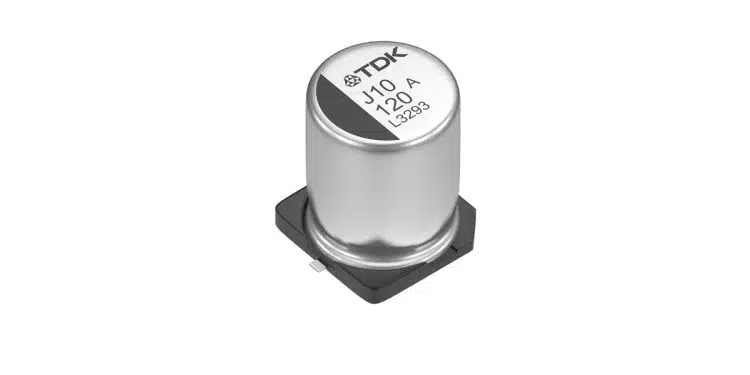TDK Corporation presents the B40910 series of hybrid polymer aluminum capacitors which can handle high ripple current up to 4.6 A (100 kHz, +125 °C).
This is because at room temperature the surface mount components offer an extremely low ESR value of 17 mΩ and 22 mΩ, respectively.
Furthermore, their ESR does not change as much with temperature as standard electrolytic capacitors with liquid electrolytes.
The 10 x 10.2 mm or 10 x 12.5 mm (D x H) small components have a rated voltage of 63 V and cover a capacitance range from 82 µF to 120 µF.
As their temperature range spans from -40 °C to +145 °C, the reflow solderable capacitors are typically used in demanding applications in automotive and industrial segments. Their useful life is more than 4000 h at a temperature of +135 °C at the rated voltage and the maximum ripple current IAC,max.
Features
- Very high ripple current capability of up to 4.6 A
- Very low ESR and low ESR variation across the temperature range
- High operating temperature capability up to +145 °C
- Long useful life of 4000 h at +135 °C
- Surface mount device, suitable for reflow soldering
Applications
- Automotive electronics
- Industrial electronics
Specifications
| Ordering code | Rated capacitance CR (120 Hz, +20 °C) [µF] | ESRmax (100 kHz, +20 °C) [mΩ] | IAC, R (100 kHz, +125 °C) [A] | Case dimensions (D x H) [mm] |
|---|---|---|---|---|
| B40910A8826M000 | 82 | 22 | 4.0 | 10 x 10.2 |
| B40910A8107M000 | 100 | 22 | 4.0 | 10 x 10.2 |
| B40910B8107M000 | 100 | 17 | 4.6 | 10 x 12.5 |
| B40910A8127M000 | 120 | 17 | 4.6 | 10 x 12.5 |
































